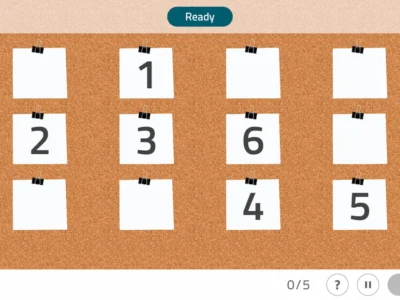Neuropsychologist Cristina Martínez explains what the Pygmalion Effect is and its influence on expectations.
What is the Pygmalion effect?
The Pygmalion effect consists of the more or less conscious interpretation and belief about how reality should be. In this way, we adjust our behavior, thoughts and attitudes in order to obtain the expected outcome.
The Pygmalion effect can also be understood from the theory of the Self-Fulfilling Prophecy, which postulates that if we believe that something (whether positive or negative) is going to happen in our life, it will happen, since unconsciously we move toward that expectation, whether we like it or not.
In this way, the expectations we place on others can cause them to become real.
Indeed, the anticipation of an event tends to facilitate its fulfillment (Álex Rovira)
How does the Pygmalion effect work?
Nowadays, we can apply the Pygmalion effect positively (but also negatively, be careful!) in many contexts. After all, in any field where thoughts, beliefs and words operate, the Pygmalion effect can be applied: in the workplace, in classrooms, in parenting, in social relationships and even to oneself, directly influencing self-esteem.
The Pygmalion effect was empirically tested by researchers Rosenthal and Jacobson in 1964. The study Pygmalion Effect in the Classroom consisted of an experiment conducted in a school. They evaluated randomly selected elementary school children with the made-up and fake test Harvard Test of Conjugate Acquisition, which supposedly measured the students’ intellectual ability or intelligence quotient, when it only measured some nonverbal-type constructs.
Teachers were told that the students who scored highest on this test would have the best academic scores in the school year.
And so it was. After 8 months, the students subjected to this experiment who had obtained the highest scores had achieved truly spectacular performance the following year, far surpassing the control group.
Thus, the hypothesis of Rosenthal and Jacobson is confirmed: by giving teachers information about the most “brilliant” or capable students, they, unconsciously, facilitate the success of these students due to the expectations they had about them.
According to Rosenthal, this is due to four factors:
Influential factors
- The emotional climate is warmer and more supportive: unconsciously the teacher uses nonverbal language directed at the students expected to succeed, such as smiles, glances, tone of voice…
- Greater effort and higher demands from the teacher toward the students expected to succeed, more effort to explain the material better and more thoroughly and greater demand for results.
- More confidence in the responses of the students expected to succeed, giving them more time to answer, or helping them generate different alternatives.
- More praise: the more the teacher believes in the student, the more they praise and reinforce them.
The double-edged sword of the Pygmalion effect: Positive and negative
Knowing the strength and importance of the Pygmalion effect, it is necessary to reflect on the influence it exerts on the lives of others, and ourselves.
The Pygmalion effect works both ways, conditioning toward success or toward failure.
What you expect of a person causes you to behave differently toward them.
In our daily lives, our actions respond to the expectations and beliefs that others place on us: our partner, our friends, our bosses, our parents.
From a neurophysiological point of view, when someone trusts us and is our Pygmalion, the limbic system accelerates and with it the speed of our thinking, increasing our clarity and energy, achieving greater effectiveness and efficiency.
Treat a person as they are and they will continue to be what they are; treat them as they can and should be and they will become what they can and should be…

Subscribe
to our
Newsletter
The Pygmalion effect in education
People who are responsible for children or students should take special care with verbal and nonverbal language, in order to avoid transmitting a negative Pygmalion effect.
Children build their identity and self-concept at these ages, so any message received from their reference figures such as parents, teachers, or coaches is crucial for the development of low or high self-esteem, and the sense of self-efficacy about themselves that they develop.
If a child is continuously hearing… “Don’t do that, you’ll fall…” The child will eventually fall. If a child is told “This exam is going to be very difficult and unless you have learned well what we explained this month you won’t pass it…” That child will fail.
Labels also create a very negative Pygmalion effect on the child’s self-concept. If he, of all the siblings, is “the clumsy one”, he will probably end up being clumsy.
Similarly, by sending them positive messages and confidence in their abilities, we will be giving those children wings.
In short…
Whether you think you can, or you think you can’t, in both cases you are right
We share a beautiful short film that will help better understand the Pygmalion effect: It is known as the Pygmalion effect, and it works at any time in our lives:
If you liked this post about the Pygmalion effect, you might be interested in these NeuronUP articles:
“This article has been translated. Link to the original article in Spanish:”
El Efecto Pigmalión y la fuerza de las expectativas







 Selective attention rehabilitation
Selective attention rehabilitation
Leave a Reply